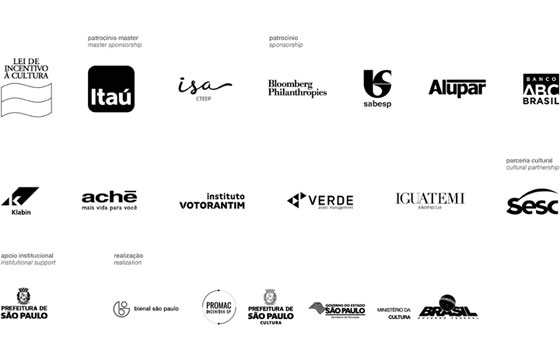The artist Katrín Sigurdardóttir has invited five people from different countries to read excerpts from 'Physics', by Aristotle, Chapter 1.7., in English and Portuguese.
A artista Katrín Sigurdardóttir convidou cinco pessoas de diferentes países para ler trechos de 'Física', de Aristóteles, capítulo 1.7., em inglês e português.
1.a
We shall now give our own account, first discussing all cases of coming to be,
since the procedure that is in accord with nature is first to say what is common to
all cases,
and then to get a theoretical grasp on what is special to each one.
For we say that one thing comes to be from another,
indeed, a distinct one from a distinct one,
whether speaking about simple things or about compound ones.
1.b
Afirmemos da seguinte maneira, discorrendo,
de início, sobre o vir a ser em geral –
pois é conforme à natureza, após afirmar inicialmente as características comuns,
estudar então as próprias de cada coisa.
Dizemos que uma coisa provém de outra, ou que uma coisa distinta provém de
uma coisa distinta,
enunciando itens simples ou itens complexos.
2.a
… There is this to grasp from every case of coming to be,
provided we look at them in the way we described,
namely, that there must always be some underlying subject that comes to be
and even if it is one in number, in form it is not one
And the one remains and the other does not remain.
The thing that is not an opposite remains
2.b
É possível apreender, para absolutamente todas as coisas que vêm a ser,
o seguinte (se alguém as encarar tal como afirmamos):
é preciso, sempre, que algo esteja subjacente àquilo que vem a ser,
e que aquilo [sc. que subjaz], mesmo se for um em numero, não seja um pela
forma
Um deles subsiste, mas o outro não subsiste:
o que não é oposto subsiste.
3.a
For in every case there is something that underlies,
from which the thing comes to be—
for example, plants and animals come to be from seed.
And of the things that unconditionally come to be, some do so by change of
figure (for example, a statue),
some by addition (for example, things that grow),
some by subtraction (for example, [the statue of] Hermes from the stone),
some by composition (for example, a house),
some by alteration (for example, things changing with respect to their matter).
And it is evident that everything that comes to be in this way
comes to be from an underlying subject.
3.b
De fato, sempre há algo que subjaz,
de que provém aquilo que surge,
tal como os animais e plantas provêm da semente.
As coisas que vêm a ser sem mais
vêm a ser umas por refiguração, como a estátua;
outras por adição, como as que crescem;
outras, por subtração, como o Hermes provém da pedra;
outras, por composição, como uma casa;
outras, por alteração, como as que se pervertem pela matéria.
É manifesto que todas as coisas que vêm a ser dessa maneira provêm de algo
subjacente.
4.a
So it is clear from what has been said
that whatever comes to be
is always composite,
and there is one thing that comes to be,
and another that comes to be this.
And the latter is twofold:
either the underlying subject or the opposite.
By this I mean that
the lack of figure,
the lack of shape,
or the lack of order is the opposite,
whereas the bronze, the stone, or the gold
is the underlying subject.
4.b
Por conseguinte, pelo que foi dito,
é evidente que tudo que vem a ser, sem exceção,
é sempre composto, e que há, de um lado,
algo que surge e, de outro,
algo que vem a ser isso,
de dois modos: o subjacente, ou o oposto.
Assim, chamo "oposto" a desorganizaçao,
a ausência de forma e a desordem,
e de "subjacente" chamo o bronze, a pedra e o ouro.
5.a
It is then evident—
if indeed there are causes
and which they primarily and not coincidentally are
or have come to be
the thing that each is said to be
in accord with its substance—
that everything comes to be from both the underlying subject
and the shape.
5.b
Assim, visto que,
dos entes que são por natureza,
há causas e princípios primeiros pelos quais vêm a ser
e são aquilo que se dizem ser em sua essência
é manifesto que tudo vem a ser a partir de um subjacente
e de uma forma.


